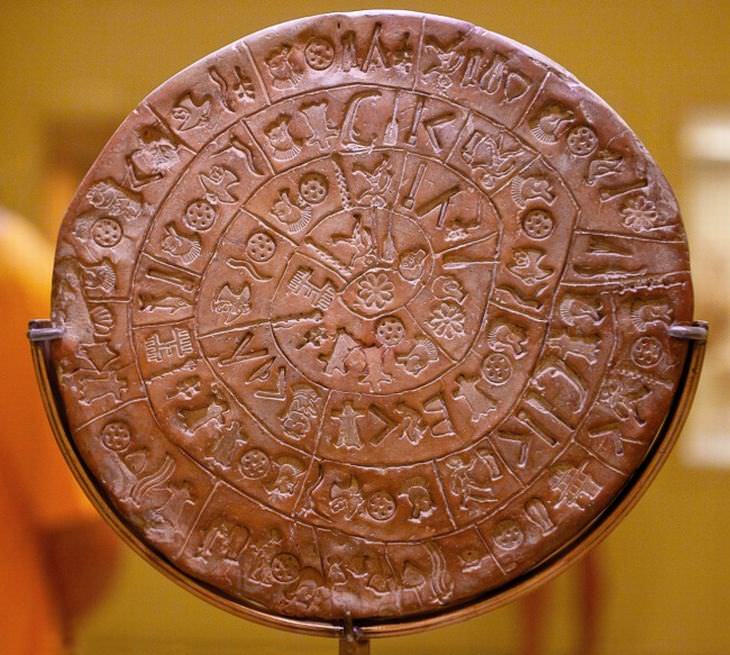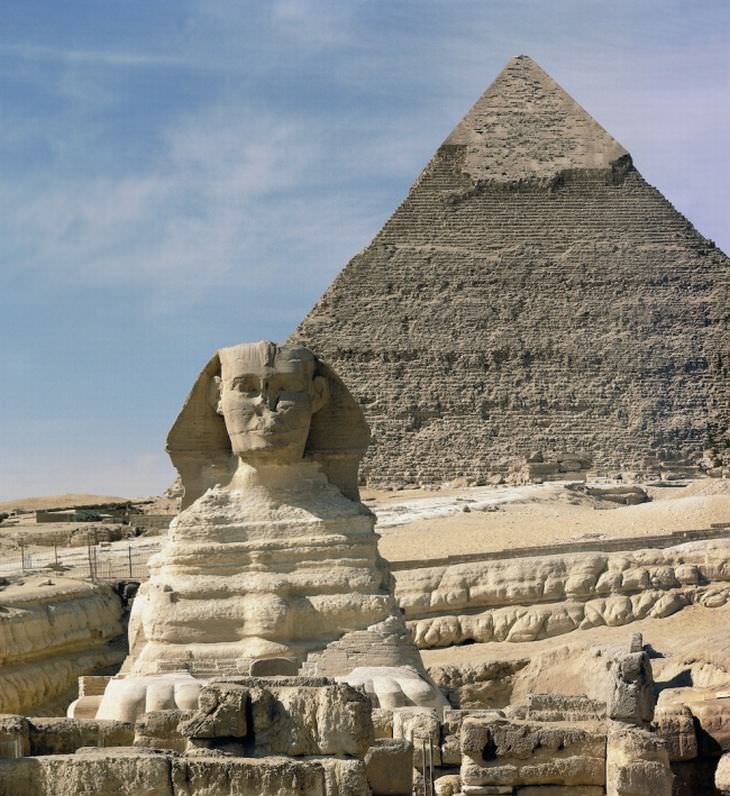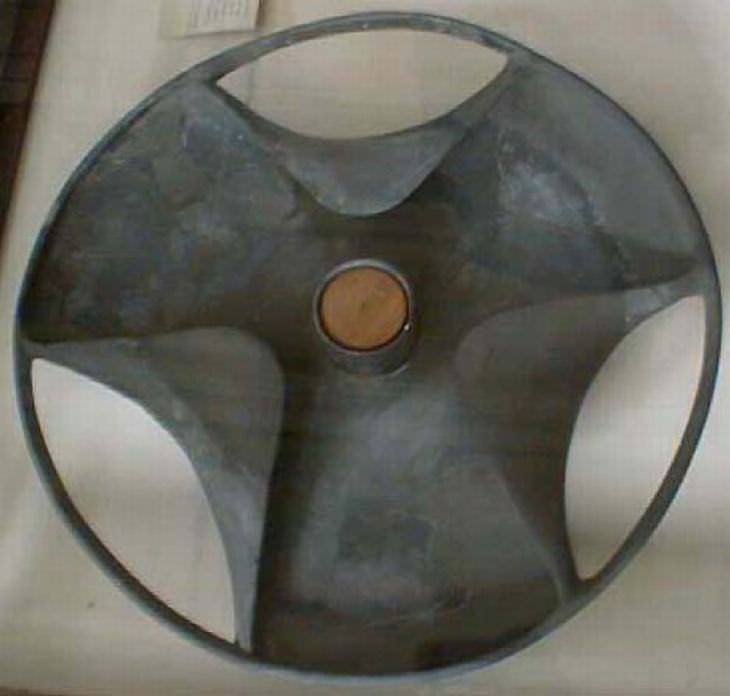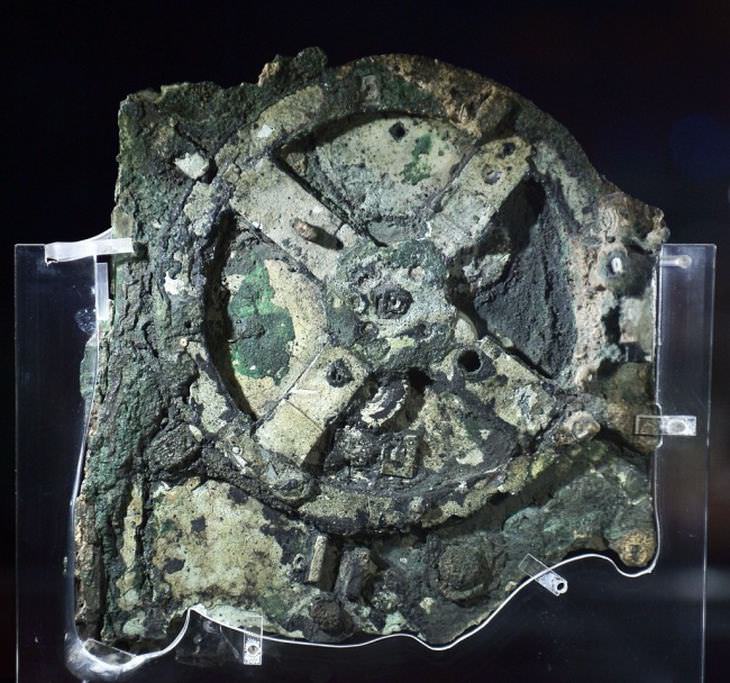1. Colombian golden airplane, 4th-7th centuries AD
This artifact was made by the Quimbaya civilization. While scientists believe that these items are no more than the stylized recreations of birds and insects, theorists claim that the airplanes represent ancient flying machines. It was also found that the enlarged replicas of these artifacts can actually fly.
2. Roman dodecahedron, 2nd-3rd centuries AD
Hundreds of similar items have been found all over the world, including in Italy, the UK, France, Germany, Hungary and also Vietnam. Speculated uses of the dodecahedron include candlestick holders, dice, gauges to calibrate water pipes or possibly, a fortune-telling device.
3. Nimrud lens, 750-710 BC
This optical lens was unearthed at the Assyrian palace of Nimrud, in modern-day Iraq in 1850. The lens is made of crystal rock and can magnify things to three times their original size. Some scientists believe that it was part of a telescope or had a decorative function.
4. Baghdad battery, c. 2500 BC
It may seem strange, but this is a battery made of terracotta pots containing a copper cylinder, housing a single iron rod. It was then discovered that replicas of these pots filled with electrolytes could produce a voltage of approximately 2 volts. Could it be that the ancient Babylonians were aware of this method and used the item to electroplate gold onto silver objects? Skeptics claim that these pots were used as storage for scrolls.
5. Phaistos Disc, 2700-1400 BC
This disc was discovered in the Minoan palace of Phaistos on the island of Crete in 1908. Unfortunately, the origin of the discs and the meaning of its signs are still unclear because the clay the disc is made from cannot be found anywhere on Crete, and the signs don't have enough background to be deciphered.
6. Egyptian pyramid construction techniques, 2667 BC
To this day, scientists cannot agree on how the Egyptians pyramids were built. While a few different views have been made. One of them claims that the stones were not actually carved but made of concrete right at the construction place. Nevertheless, this method does not explain the huge natural granite stones weighing over 10 tons.
7. Sabu Disc, 3100-3000 BC
This disc, made of stone, was discovered in the tomb of Sabu in the village of Saqqara in Egypt. No analogs of this disc have been found so far, it is hard to say what its purpose was.
8. Antikythera mechanism, 100 BC
Often called an 'ancient Greek computer' because it can predict astronomical positions and eclipses for calendar and astrological purposes. In addition, it also tracks the cycle of the ancient Olympic Games.
9. Iron pillar of Delhi, 415 AD
This site is one of the major sightseeing attractions of Delhi. The pillar is notable for the fact that it has been almost unaffected by rust for its 1,600-year existence. Some theories suggest that the pillar was made from a meteorite, but this proved to be incorrect. Rather, it seems likely that ancient Indian ironsmiths achieved a high level of skill in the extraction and processing of iron. In doing so, they also created an even oxide layer - this served to protect the pillar from the effects of the Delhi climate.
10. Flexible glass, 14-37 AD
This flexibile glass which cannot break was created by an unknown craftsman who made a drinking bowl out of it and brought it to the Roman Emperor Timerius Cesaar as a gift. Ceasar appreciated the gift but then beheaded the inventor for fear that such a material could undermine the value of gold and silver.
11. Zhang Hang’s seismoscope, 132 AD
Produced by Chjinese inventor Zhang Hang, when an earthquake approached, this device dropped a bronze ball from a dragon head into the mouth of a toad sitting below. The device also had a swining pendulum inside which was connected to the dragon heads with levers.
12. Nebra sky disk, c. 1600 BC
Discovered near Nebra, Germany in 1999, this bronze disc was initially suspected of being a forgery. But now, it is widely accepted as authentic. The device provides close observation of the yearly course of the sun and the angle between its rising and setting points at the summer and winter solstice, making it the oldest 'portable instrument' to allow astronomical measures.




